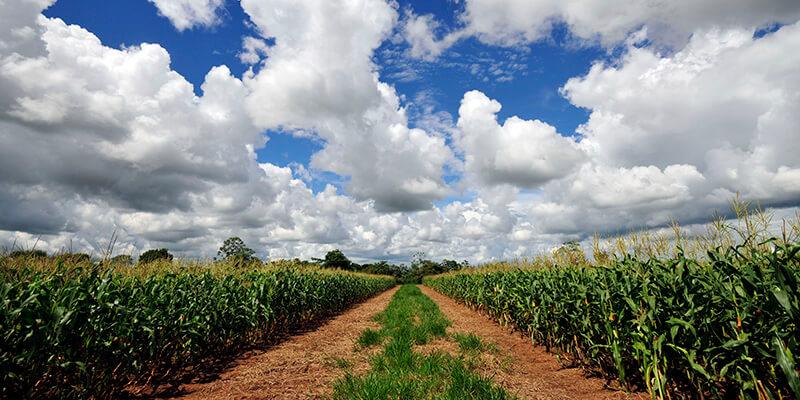Most greenhouse gas emissions (GHG) caused by producing the food we eat come from agricultural sources, yet few companies that sell food assess and disclose emissions from agriculture. And fewer companies set targets to reduce emissions from agriculture.
In a report released by the sustainability nonprofit Ceres and the CGIAR Research Program on Climate Change, Agriculture and Food Security (CCAFS) in November 2018, University of Vermont researcher and lead author Meryl Richards describes tools and methods to improve disclosure of the food sector’s supply chain emissions, which significantly contribute to global climate change.
“Food companies can make a major contribution to meeting the goals of the Paris Climate Agreement. Some are leading the way by setting science-based climate change mitigation targets that include emissions from agriculture,” said Richards, of UVM’s Rubenstein School of Environment and Natural Resources and Gund Institute for Environment. “Transparently measuring progress on these targets sends a signal to investors and consumers that companies take climate change seriously.”
The report, “Measure the Chain: Tools for Assessing GHG Emissions in Agricultural Supply Chains,” provides companies with an assessment of tools and methods to better manage and disclose emissions generated by agriculture. Agriculture, including emissions from livestock, fertilizers, and associated land-use change, including deforestation, cause up to a quarter of global anthropogenic greenhouse gas emissions—more than either the industry sector or the transportion and building sectors combined.
A recent survey conducted by Ceres found that less than one-third of the 50 largest food and beverage companies in the U.S. and Canada publicly disclose emissions from agricultural production. Of the 50 companies analyzed, 30 have active, company-specific greenhouse gas emissions reduction targets for their own operations. Among these 30 companies, only 15 disclosed indirect emissions (referred to as Scope 3 emissions), including those from agricultural production. And only eight have explicit targets to reduce these emissions.
In 2017, the 15 major food companies that disclosed agriculture and other supply chain emissions emitted 629.9 million tons of carbon dioxide emissions, equivalent to annual emissions from 156 coal-fired power plants or 70.9 billion gallons of gasoline. Supply chain emissions accounted for 85 percent of the companies’ total carbon footprints.
“The data is clear that agriculture supply chains are major contributors to climate change,” said Julie Nash, Director of Food and Capital Markets at Ceres and a PhD graduate of the Rubenstein School and former graduate fellow at the Gund Institute. “With recent advancements, food companies have guidance and tools to measure these supply chain emissions.
“Many iconic food brands are already disclosing supply chain emissions and setting targets to reduce them. More companies will need to do the same,” Nash said
“Any food and beverage company that takes climate action seriously must set meaningful targets to reduce emissions from agricultural production,” said Kevin Rabinovitch, Global Vice President, Sustainability at Mars, Incorporated. “At Mars, 75 percent of our full value chain emissions come from agriculture and land use. To reduce these emissions, our Sustainable in a Generation Plan includes ambitious, science-based targets.”
Given the magnitude of reductions needed to limit average global temperature rise to below 1.5 degrees Celsius, as urged by the United Nations Intergovernmental Panel on Climate Change (IPCC) report, measuring and reducing greenhouse gas emissions is critical.
“It’s clear to us that if a food and beverage company is serious about reducing its climate impacts, it absolutely must be working to reduce the emissions associated with agricultural production of its products,” said Allan Pearce, Shareholder Advocate at Trillium Asset Management. “Working to measure and manage these supply chain emissions will help build supply chain resiliency and preserve shareholder value, which is why we at Trillium are interested in how food and beverage companies are addressing their Scope 3 emissions.”
Given the advanced methods and tools described by Richards in “Measure the Chain,” companies should plan to fully disclose Scope 3 greenhouse gas emissions and present the scientific basis for their disclosure. This includes providing evidence ranging from which estimation methods were used to how companies integrated land-use change in their assessment.
